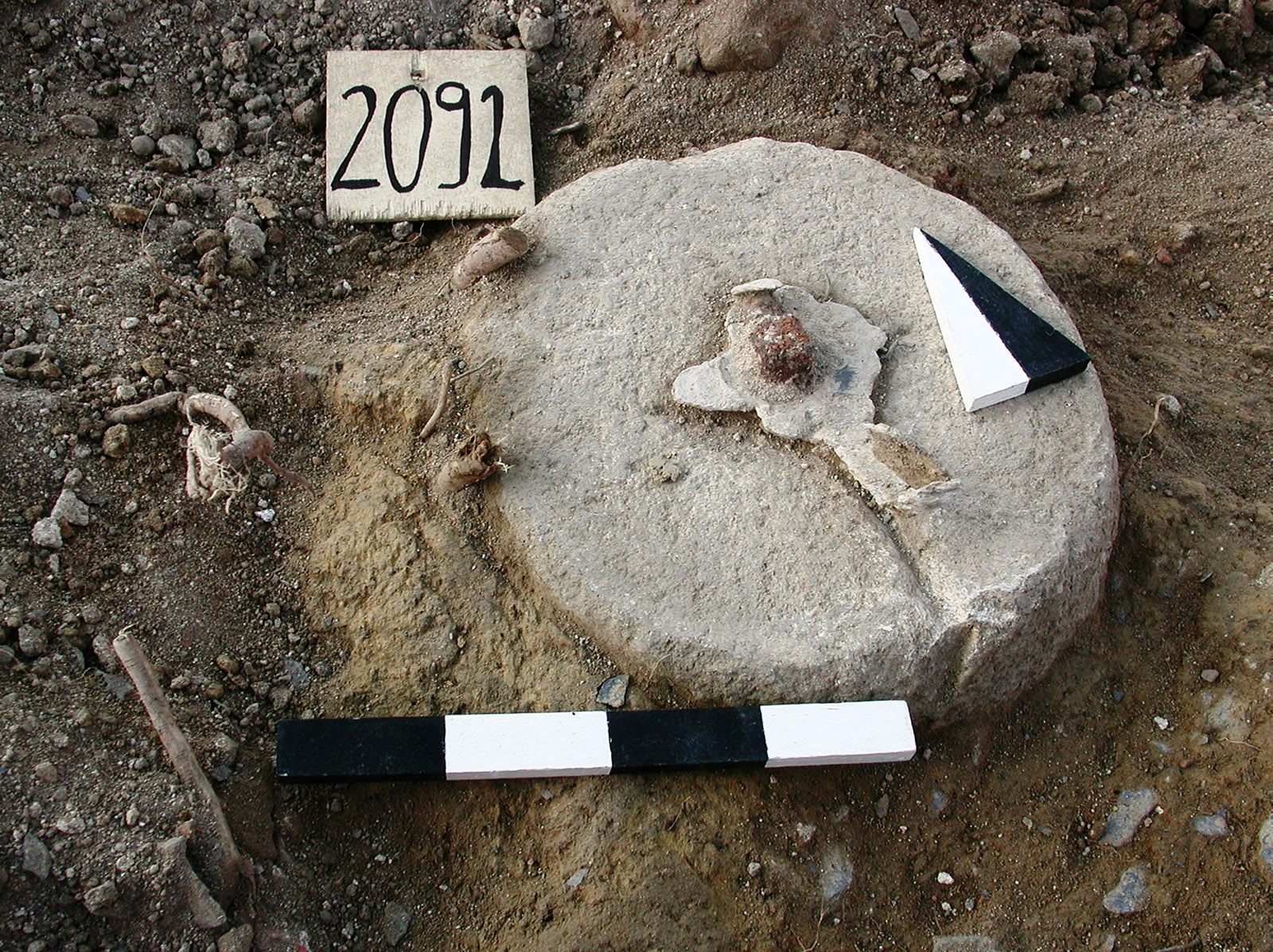
Nella parte Est dell’Area Archeologica sono individuabili le cospicue tracce dell’ingrandimento della chiesa avvenuto intorno agli inizi dell’XI secolo.
Dopo la distruzione dell’abside orientale della chiesa più antica venne, infatti, realizzato un ampio transetto commisso a T, triabsidato e disposto su due livelli. Il livello inferiore, parzialmente interrato e sfruttante il declivio del rilievo collinare, fu costituito da un’ampia cripta ad oratorio, spartita da volticciole a crociera sostenute da ben otto colonnine (le cui basi sono visibili all’interno delle teche presenti sul pavimento) e accessibile per mezzo di due strette rampe discendenti in aderenza con i muri laterali della navata. Al centro delle absidi, sono state ritrovate le basi dei tre altari, a parallelepipedo, di muratura ordinaria intonacata e dipinta, precedute da un gradino.
L’altro livello, alquanto soprelevato e accessibile per mezzo di una più ampia rampa centrale ascendente non pervenuta, fu costituito dal presbiterio nel quale si prolungavano le tre absidi della cripta.

At the beginning of the 11th century, the power of the Bishops of Lucca went from strength to strength so that, following the promotion of the oraculum of the parish church of Santa Maria, Bishop John II implemented the principles of Gregorian reforms of restoring clerical morality, establishing a regular rectory at Santa Maria a Monte, comprising of 14 ecclestiastical figures including priests, deacons and clerics, who resided in the church area. The place of worship and the canonical outbuildings, including the cloister, refectory, dormitory and chapter house, required more space and structural expansions or adaptation of previous structures. Unfortunately, no traces have remained of the canonical annexes due to a landslide of the northern half of the Rock fortress, which occurred in 1950. Vestiges of reconstruction of the church, brought to light by archaeological excavations, are still substantial however. The intervention of the first quarter of the 11th century did not shake up the structure of the Lombard church. However, the eastern apse was demolished to make way, in continuity with the eastern aisle, for a large transept with a Tau cross, three apses and on two levels (1). The lower level corresponded to an oratory-style crypt, divided by cross vaults supported by eight small columns (2). Access was secured by two narrow ramps (3), and its apses still preserve the three original altars today. The Madonna and Child was most probably kept in the crypt (5), in gilded wood, dating back to the middle of the 13th century and now on view at the Collegiate, in the historic centre of Santa Maria a Monte. In the latter there are two other elements relevant to the original interior of the old parish church: the marble ambo in the style of Guidetto placed on column-bearing lions (end of 12th century),(6) and the wooden crucifix attributed to the Master of the Crucifix of Camaiaore (first quarter of 14th century),(7).









